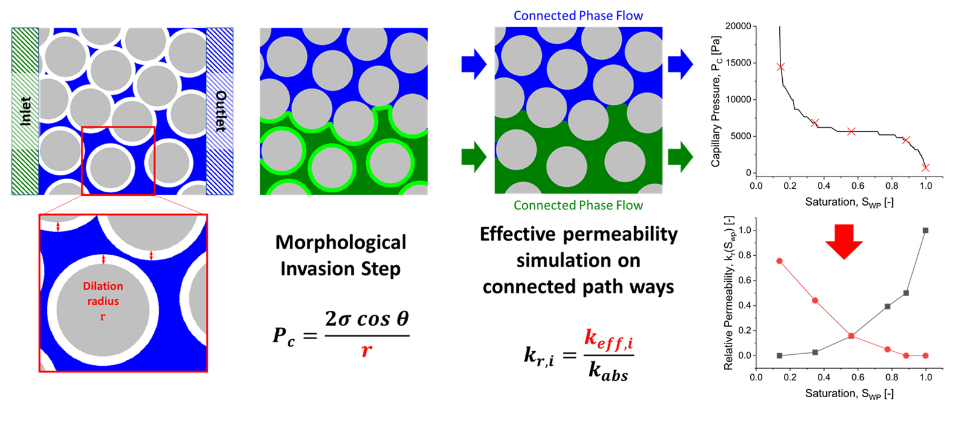Forced Imbibition and Uncertainty Modelling using the Morphological Method
Please note that after activating the video, data will be transmitted to YouTube.
More Information
Abstract
The morphological approach is a computationally attractive method for calculating relative permeability and capillary pressure saturation functions. In the workflow, morphological operations are used to calculate the fluid phase distribution in the pore space of a digital twin. Once the pore space is occupied, the fluid-phase conductivity and thus flow properties can be calculated by direct simulations on the phase occupied pore space. It therefore combines computational advantages with direct flow simulations on the digital twin. The morphological approach has delivered good results for drainage, but showed limitations in terms of imbibition processes and uncertainty modeling.
In this work, we implement contact angle distributions in a deterministic and stochastic way in the approach. With this, we extend the simulated saturation range from purely spontaneous to forced imbibition, resulting in a full range imbibition relative permeability. Furthermore, by introducing stochastic contact angle distributions, different fluid phase distributions are obtained which allow for an uncertainty analysis. To verify the simulation results, we check (a) whether the simulation results agree with experience from SCAL measurements, and (b) compare the morphologically derived results and experimentally determined. Due to the newly introduced modifications, the imbibition process now behaves as physically expected and is in better agreement with experimental data compared to earlier studies.
